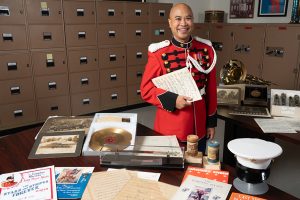
How do you archive a robot?
This is the question that Kathleen Donahoe, robot archive processing archivist at Carnegie Mellon University (CMU) Libraries in Pittsburgh, and a team of archivists, roboticists, and preservation experts seek to answer through the Robotics Project, which launched in 2019.
“There are just so many layers to how a robotics project comes about, and each has its challenges,” says Donahoe. CMU’s archive is not just robots. It also contains digital copies of the code they run on, records of research and development processes, photos, videos, and correspondence between collaborators.
Organizing these items can be tricky, Donahoe says. Caustic material needs to be protected in older engines and motors. Not all labs have the same workflow, meaning data can be spread across third-party platforms like Slack or GitHub. And in such a fast-paced field, she notes, preservation isn’t always a top priority, as robots may be disassembled and remixed into new projects. “[People in the lab are] not necessarily thinking, ‘We should keep this robot for 40 years,’” Donahoe says. “They’re thinking, ‘I need that arm.’”
CMU’s collection is available through its Digital Robotics Archive, and almost all items are available to view in person and open to the public. Preserving this history doesn’t benefit only researchers; the archive attracts fine arts students and even character artists for Disney. A favorite item of patrons is the inflatable robotic arm that helped inspire the design of the Big Hero 6 character Baymax. “When [students] come in and see it during open houses, their eyes light up and they get really excited,” Donahoe says. “It’s a very CMU thing, to have that crossover between the humanities and sciences.”


